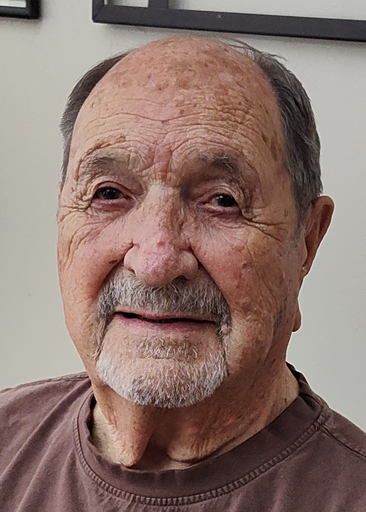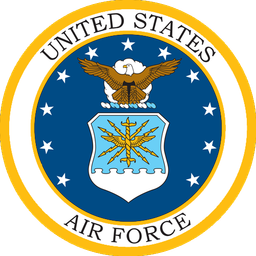

Orville Christian Johnson
December 24, 1928 — April 11, 2025
Albuquerque

Orville Christian Johnson, age 96, passed away on April 11, 2025, at his Albuquerque home surrounded by his loved ones. He was a loving husband, father, and grandfather, a retired military test pilot, and retired builder. He is survived by son Jeffrey and his son Bradley; son and daughter-in-law, Steven and Michelle and their daughters, Esther and husband Josh with their son Jacob, Marie and husband Michael; a daughter and son-in-law, Laura and Jeffery Idol; and his youngest daughter, Lisa and her husband William Crawford. Orville was preceded in death by his parents Henry and Sophie Johnson, his sisters Lois and Ruth, his artistically talented, beloved wife Mary Elizabeth (Betty), and their oldest son Christian.
Johnson was born December 24, 1928, and grew up on the family grain farm, first homesteaded by his Norwegian grandfather, near Lawton, North Dakota. In those days, there was no electricity on the farm. He started school in a four-room schoolhouse in Lawton where he graduated high school in a class with just 3 other young men. He attended the University of North Dakota in Grand Forks, served 4 years in ROTC, during which he was awarded membership in the National Society of the Scabbard and Blade for "outstanding ethical and moral behavior," and graduated with a bachelor's degree in mechanical engineering in 1951. Shortly after graduation, Orv went to work for the General Electric Company in Schenectady, NY. The GE Test Engineer Program, which included the Aeronautic and Ordnance Systems, introduced him to jet engine fuel controls, autopilot systems, and ordinances. Jet engineering inspired his initial curiosity about flying, which led to an extraordinary career in aviation and a lifelong love of flying airplanes.
Orv Johnson was an aviator par excellence. While at GE, he was called up by the North Dakota Air National Guard for two years' active duty in repayment for ROTC training during college; he entered military service with the commission of 2nd Lieutenant. Naturally, he signed up for Pilot Training, which included an additional 2-year commitment. In 1952, Orv reported to the air base in Malden, Missouri. With absolutely no experience in flying aircraft, Orv's first flight instruction was in a T-6G, a single engine advanced trainer nicknamed the "pilot maker," a warbird used to train combat pilots. His first instructor was the esteemed Harry Gourley, a man whose talent and patience started Orv out with the confidence, attitude, and skills for precision flying that would serve him throughout his career. Basic training also included instruction in formation and instrument flying and introduction to flying the T-33 Shooting Star, aka T-Bird, a subsonic jet trainer. By June 1953, he had earned his wings and progressed to Fighter Weapons School at Nellis AFB where he flew F-80 Shooting Stars and F-86 Sabre jets, his most favorite aircraft for its speed and maneuverability. Orville recalled flying in jet formations that almost touched wingtips and recounted flying aerobatics with a minimum hours of training. During his time at Nellis, his frequent wingman was Col. Benjamin O. Davis, one of the renowned Tuskegee Red Tails, who flew the famed P-51 Mustang fighters of WW IL Davis was a classmate, upgrading skills to fly fighter jets, and later became Johnson's Wing Commander at Suwon Air Base in Korea, where he was part of the 36th Fighter-Bomber Squadron, aka the "Flying Fiends." Back from the Korean War in 1954, he was stationed at Eglin Air Force Base near Niceville, FL. Orv flew a broad variety of aircraft including the B-29 Superfortress, B-47 Stratojet, F-84G Thunderjet for target towing, and C-45 Expeditor for parts pick up. He flew everything from a 40-ton B-50D Superfortress, the last prop-driven bomber, to a 2.5-ton DeHavilland Beaver L-20. He also served as a project pilot for M-39 and Gatling gun installations. Having successfully fulfilled his military duties, he was discharged in 1956 and returned home to North Dakota where he bought his first airplane, a $500 second-hand J-5 Crusier Piper Cub. He used his father's pasture or the county roads for runways and parked the airplane in the side yard of the farmhouse. When a tornado hit the area, even though the J-5 was tied down, high winds lifted the small plane, pulled out the tie downs, flipped the plane over on its tail, wrecked the engine cowling and bent the propeller. To add insult to injury, the wind then pulled the J-5 up and impaled it in a tree. Orv and his father used a front-end loader to lift the plane out of the tree. Then his father unbent the propeller and balanced it with screws, a local tinsmith repaired the cowling, and Orv got canvas and patched the holes in the wings from the tree limbs. He sold the J-5 for $450 when he left the farm for his new job.
Orv's extensive career as a test pilot began in 1956 as an Engineering Test Pilot at the Air Armament Division of Westinghouse Electric Corp in Baltimore, Maryland. This involved testing performance and flight systems for Navy and Air Force aircraft including the F4D-1 Skyray, a high altitude fleet protection interceptor, the F8U-2P photo reconnaissance jet, F9F-6 Cougar carrier-based fighter jet, F2H2-Banshee jet fighter bomber, C-47 Gooney Bird military transport, B57B-Canberra jet strike bomber, A3D-2 Skyraider strategic bomber, F-4II Phantom fighter jet with a top speed over Mach 2.2, and the FlOlB Voodoo, the first supersonic photo-reconnaissance jet. He also joined the Maryland Air National Guard 104th Squadron, became a captain, and maintained his proficiency in flying F-86E Sabre jets. During this exceptional time period, Orv also met and married Betty Calligan, an artist and the love of his life, whom he met on a blind date. Betty had worked for American Airlines and shared his interests in aviation. Betty took her first instruction flight in a Piper J-6 after they married; but a year later, their first child was born, and she turned her attentions from art and aviation to family.
At the behest of Westinghouse, Orv also attended the highly regarded, strenuous US Naval Test Pilot School at Pax River. One of his instructors at the Naval Test Pilot School was Pete Conrad, who later became an astronaut, the Commander of the Apollo 12 mission, and the third man to walk on the moon. After graduation from the TPS, he returned to Westinghouse where he took part in testing tactical radar and weapons control systems for the F-4 Phantom series fighter bomber. He continued flying, on weekends only, for the MD Air National Guard. In addition, he and Betty now had three children at home. By 1962, he followed Pete Conrad's example and applied to NASA for consideration as an astronaut trainee. Despite persevering through the rigorous physical and mental testing, NASA did not invite him to join the astronaut program. Orv speculated that he had not been accepted because his height and weight did not fit the Gemini specifications. He would never know the answer. Despite this disappointment, he continued his career in aviation and was re-called to active duty by the USAF with the 104th Tactical Fighter Squadron. He spent one year at Cannon Air Force Base in New Mexico; afterwards, he completed his service with the USAF and left the Maryland Air National Guard with the rank of major.
At this turning point in his life, Orv decided to leave a remarkable career at Westinghouse. In 1968, Orv and Betty, with their flourishing family of 5 children, decided to raise their children among their new friends in New Mexico and continue their life adventure in the Southwest.
In New Mexico, Orv and a friend formed a construction company, and he became a developer and contractor, building affordable, distinctive homes and commercial buildings in Albuquerque and Santa Fe. But the skies beckoned again, and Orv joined the NM Air National Guard 188th Squadron "TACOS." With the squadron stationed at Kirtland Air Base, he flew weekend missions in F-lO0C and F-lO0F Super Sabre supersonic jets and then transitioned to A7-D Corsair light subsonic attack aircraft. He also flew private aircraft, with his wife and children as passengers, to family reunions with their grandparents near Edmore, North Dakota each summer. His children loved flying with their father as their trusted pilot. After retiring from the construction business in 2005, he and Betty moved from their Santa Fe home back to Albuquerque to be near their children. Prior to retirement, Orv had flown for both pleasure and business and owned and flew family and friends in seven different Beechcraft. Piper, and Cessna civilian aircraft. He also managed to fit in flying a Schwitzer glider and a Hughes 300 helicopter. In 2010, he and friend Chuck VanGelder purchased a small Grumman American Yankee Trainer AA-lA. After reactivating his license and passing the physical, Orv took to the skies again, in the AA-lA, a small plane that could fly only 115 mph max, unlike his favorite F-86 Sabre with a top speed of 670.9 mph. Of course, Orv wanted a larger plane that flew faster with a longer range. Two years later, at age 84, he purchased his last airplane, a fully built Vans RV-BA, an aerobatic kit aircraft, so he could enjoy the thrill of loops, rolls, and flying upside down one more time. A good man and a great pilot, he will be remembered for his quiet smile and the sparkle in his eyes. "Mange tussen takk" for a shared and well-lived life.
In lieu of flowers, friends may choose to donate to Lap Dog Rescue of New Mexico in Tijeras, NM. Family members will hold a private burial at the Santa Fe National Cemetery.
Guestbook
Visits: 87
This site is protected by reCAPTCHA and the
Google Privacy Policy and Terms of Service apply.
Service map data © OpenStreetMap contributors


